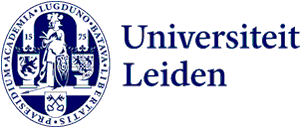
Recognition & Rewards: what does it actually involve?
Recognition & Rewards… you may have noticed it in the Strategic Plan and heard about it in conversations. But what does it actually involve, who is it relevant to, why is it important and how will we become more aware of it at the faculty?
After attending a recent Academia in Motion (AiM) session on Recognition & Rewards, which was run by HR for colleagues with managerial roles at our faculty, we can now give some answers to these questions.
Cultural change
The afternoon began with a short welcome speech by Faculty Dean Suzan Stoter. She highlighted the role of managers in bringing about the cultural change that AiM requires. Leiden University’s AiM Ambassador Marieke Adriaanse then gave a short, interactive introduction to the theme.
Academia in Motion
Leiden University aims to be an open workplace that recognises and rewards the efforts of all colleagues. Within this context, it’s important that the university develops and shares more ideas and knowledge as a way of connecting with society. The university has formulated a clear vision for Recognition & Rewards and Open Science. These two closely associated themes come together under the umbrella of ‘Academia in Motion’.
Examples
During the session, Marieke Adriaanse discussed some examples where Recognition & Rewards could play a visible role.
- Example 1: Johan shows great innovation and leadership in his teaching, but his promotion has been rejected because he has not produced enough international publications.
- Example 2: Department X is looking for a new manager in challenging times. However, the department’s senior staff members have little experience with leadership tasks. Most of them were appointed based on their publications.
- Example 3: Sophie, a postdoctoral fellow, is struggling to get recognition for her work within a large group project. Despite her hard work, all of the credit goes to the Professor who insisted on being the last/first author.
All three of the above examples are familiar situations within both the faculty and the university as a whole. The question is: how can the new Recognition & Rewards system change this?
Effective dialogue
Managers can convey the AiM philosophy and inspire their own teams and departments. They also play an important role in effective dialogue. To illustrate this, the three scenarios were acted out by two actors during the session. At the end of each scenario, the managers invited the audience to give the actors feedback. The actors then acted out the same scenario from another angle, giving the dialogue a different focus. This allowed the participants to experiment with different strategies and experience the impact of those strategies.
By the end of the afternoon, the general conclusion that participants came away with was that effective dialogue can actually be quite difficult to achieve. After all, everyone has their own style – there’s no right or wrong way to go about it. However, each style and strategy has a different result, and factors such as personal preferences and emotions also come into play. Together, we want to create an environment in which we can learn from each other and where we’re allowed to make mistakes as well.
Share your ideas
Each faculty is going to have its own AiM team that will align the AiM principles and activities with its own unique needs and context. If you want to actively share your ideas on this, please contact Marijn Stipdonk.
What does HR do?
The HR department includes the theme of Recognition & Rewards in its day-to-day work, for example by promoting the development of staff leadership skills. The new Annual Review pilot is another good example. Over the coming year, HR will be involved in rolling out the new Annual Review across the university, developing an onboarding programme for managers and establishing a faculty-wide careers policy and development programme for teaching staff.
